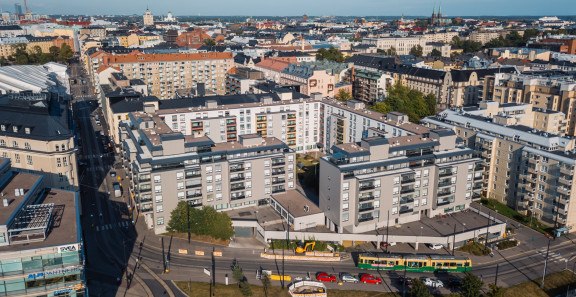Rapid growth in data volumes is continually placing increasing demands on our infrastructure. Although more and more people are using wireless internet, our information society is still based on the optic fiber network beneath our feet. It lays the foundations for things such as the development of smart transport.
Remote working has increased dramatically over the past year, and has finally shown us how necessary functional connections are. They guarantee not only uninterrupted remote meetings or fast downloads, but also the ability to make a doctor’s appointment or keep abreast of traffic information on our way out.
But these service enablers – functional and future-proof smart infrastructure solutions – require continuous development. Smart infrastructure is therefore an integral part of municipal digital strategies. Yet there’s still plenty of work to do.
“It’s vital that the availability of smart infrastructure is addressed now, if it hasn’t already been. Digitalization is increasing data volumes at a tremendous pace, and quality requirements for data connections are rising,” says Samuli Virtanen, a smart infrastructure consultant at Sitowise.
Smart infrastructure means both the data network itself and the data management it enables. Virtanen says that in a country the size of Finland, the needs and prerequisites for smart infrastructure vary greatly.
One good example is 5G, which enables maximum transfer speeds of up to 10 gigabits. It takes a considerable number of base stations to implement these kinds of speeds, as the higher the frequency the shorter the distance the signal can travel. When developing solutions, we need to have more extensive discussions about which purposes and whose needs these connections are being built for.
Samuli Virtanen, Consultant, Smart Infrastructure, Sitowise
When 5G lands, local residents’ needs will be key
Implementing smart infrastructure is largely a question of cooperation between public and private actors – in practice between telecommunications operators, municipalities and central government. For example, municipalities are best informed about where people and companies are located within their own regions. Planning can also utilize Traficom’s data on fixed network coverage maps – that is, places where connections already exist.
“Combining data from these sources creates analytics and an overall picture of how connections and people meet. We can use this information to draw up a master plan for further developing smart infrastructure. Even small steps towards more effective connections can be immeasurably beneficial in making residents’ lives that little bit easier,” says Virtanen.
According to Virtanen, Finland is already well placed to develop nationwide smart infrastructure, as energy companies are currently laying weatherproof cabling for electricity networks all across the country. Joint construction projects have the potential to generate considerable savings, as the fiber optic network can be upgraded during work on the electricity network
This kind of upgrade to the electricity network is carried out once every 50 years, which means that now is a good time to lay the modern cabling required by smart infrastructure. The most important thing is to take action. As municipalities take longer-term views than companies, solutions can always be implemented later on according to whatever schedule is most suitable for each party on the basis of their own needs.
Samuli Virtanen, Consultant, Smart Infrastructure, Sitowise
Sitowise has extensive experience in developing smart infrastructure. Virtanen has also been working with data and mobile networks in the telecommunications sector for more than 20 years.
“We’re happy to provide support at all stages of the smart infrastructure development process. This ranges from comprehensive strategy work to smaller jobs, taking our customers’ needs into account. All of our work revolves around helping Finland to develop world-class data connections,” says Virtanen.

The data connections required by future transport are being created now
Harnessing smart infrastructure has long played a major role in Helsinki’s transport planning. The controlled management of large traffic volumes requires seamless cooperation between transport planners, sensors located all across the city, the data they produce, and reliable high-speed data connections.
Traffic management in a large city is a process in which every change in traffic flows has a broader impact. For example, the Tallinn ferries that arrive in Jätkäsaari several times a day disgorge vast numbers of vehicles, and extensive planning is required throughout the city to avoid congestion. Efforts are now being made to systematically streamline data management and flow.
“We’re currently collating data about all kinds of traffic in one place. We want to make as much data as possible publicly available, so that private-sector developers can utilize traffic data in a more versatile manner. As the Internet of Things becomes more commonplace, there’s also a growing need for faster connections. We’re continually upgrading our fiber optic network in conjunction with, for example, roadworks,” says Mikko Lehtonen, a traffic engineer from the City of Helsinki.
Helsinki’s goal is to be the most functional city in the world. When it comes to transport, this will require both larger investments and continual optimization and development work. Developing smart infrastructure is a lightweight and flexible solution for preventing traffic jams.
The world will never be “finished” and connectivity must keep abreast of new developments. We’re implementing high-speed fiber and 5G connections to meet all existing and future needs. For example, although autonomous transport and automated traffic management are still far in the future, the city must already begin preparing for the smart infrastructure they will require.
Mikko Lehtonen, Traffic Engineer, City of Helsinki
